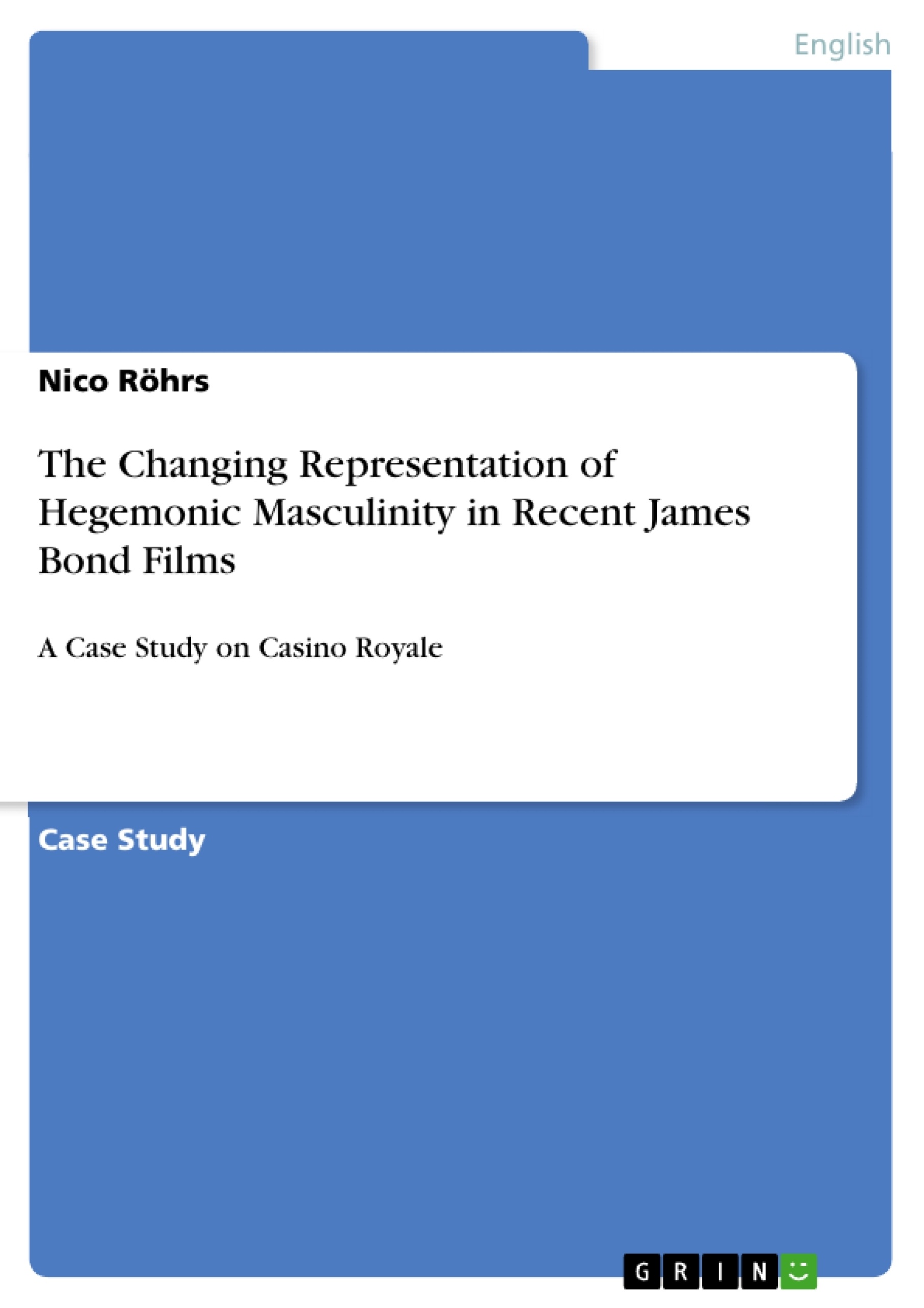The question this paper will try to answer is whether more recent Bond films such as Casino Royale still contain masculinities which define themselves through sexist or violent attitudes towards women and if those masculinities can be classified as hegemonic ones. That question is highly interesting because, as Julian Dörr from the German newspaper Süddeutsche Zeitung says, Bond’s role is a mirror of society and its masculinity.
Thus, this paper will show that recent James Bond films such as Casino Royale portray different, less toxic and less sexist representations of masculinity because changes in society and the promotion of emancipation have also influenced western film making. In order to check if that thesis can be proofed, the general construction of James Bond’s masculinity will be analyzed and deconstructed. This will be done by following certain premises which will be explained in chapter 3.
Even though Casino Royale is not a Hollywood film, I decided to choose it as my main source for analyzing masculinity in film. As the analytical approach of Hollywood films does not differ from the one used for British films and as Casino Royale was also produced in western society, the underlying values and norms do not differ to a great extent. Thus, using Casino Royale as the main source, will offer as much output as a Hollywood film would.
The series, starting with Dr. No, which was released in 1962, compiles 25 films from which Spectre is the most recent one. Due to the series’ longevity, it has reached and influenced several generations and even though Ian Fleming, the creator of James Bond, did not want to convey any meaning or political standpoint, his works and their adaptions caused several debates and controversies. One of the films’ most criticized aspects is their toxic representation of masculinity and the males’ attitude towards women.
Inhaltsverzeichnis (Table of Contents)
- Introduction
- Background knowledge: Hegemonic masculinity, gender performativity and James Bond formula
- Definitions and premises
- Main chapter
- Summary: Casino Royale
- Case Study: Casino Royale
- Conclusion
Zielsetzung und Themenschwerpunkte (Objectives and Key Themes)
This paper analyzes the representation of hegemonic masculinity in recent James Bond films, specifically focusing on Casino Royale (2006). It examines whether the film perpetuates traditional, sexist, and violent masculine tropes or presents a more nuanced and less toxic portrayal. By analyzing the film's portrayal of masculinity, the paper aims to explore the impact of societal changes and the promotion of emancipation on the construction of masculine characters in film.
- Hegemonic masculinity and its portrayal in film
- Gender performativity and its role in constructing masculinity
- The James Bond formula and its influence on the representation of masculinity
- The evolution of masculine representations in recent Bond films
- The relationship between masculinity, violence, and sexism in film
Zusammenfassung der Kapitel (Chapter Summaries)
The introduction establishes the context for the analysis, explaining the choice of Casino Royale as a case study and highlighting the enduring influence of the James Bond franchise. It also introduces the concept of toxic masculinity and its representation in earlier Bond films.
Chapter 2 provides background information on hegemonic masculinity and gender performativity. It explains how these concepts are relevant to the analysis of masculinity in film, particularly in the context of the James Bond series. It also explores the "Bond Formula" and its role in perpetuating hegemonic structures.
Chapter 3 outlines the definitions and premises that will be used to guide the analysis. It acknowledges the difficulty of defining masculinity in a singular way, given its varied historical and cultural manifestations.
Chapter 4, the main chapter, is divided into two parts. The first part provides a summary of Casino Royale, highlighting key narrative elements and character interactions. The second part focuses on the film's depiction of masculinity through a detailed case study.
Schlüsselwörter (Keywords)
This study explores the evolution of hegemonic masculinity in recent James Bond films, focusing on Casino Royale. It analyzes gender performativity, the James Bond formula, and the changing representation of masculinity in popular cinema, examining the relationship between masculinity, violence, and sexism. Key concepts include: hegemonic masculinity, gender performativity, toxic masculinity, film analysis, case study, Casino Royale, James Bond, and the James Bond formula.
- Quote paper
- Nico Röhrs (Author), 2020, The Changing Representation of Hegemonic Masculinity in Recent James Bond Films, Munich, GRIN Verlag, https://www.grin.com/document/909029



